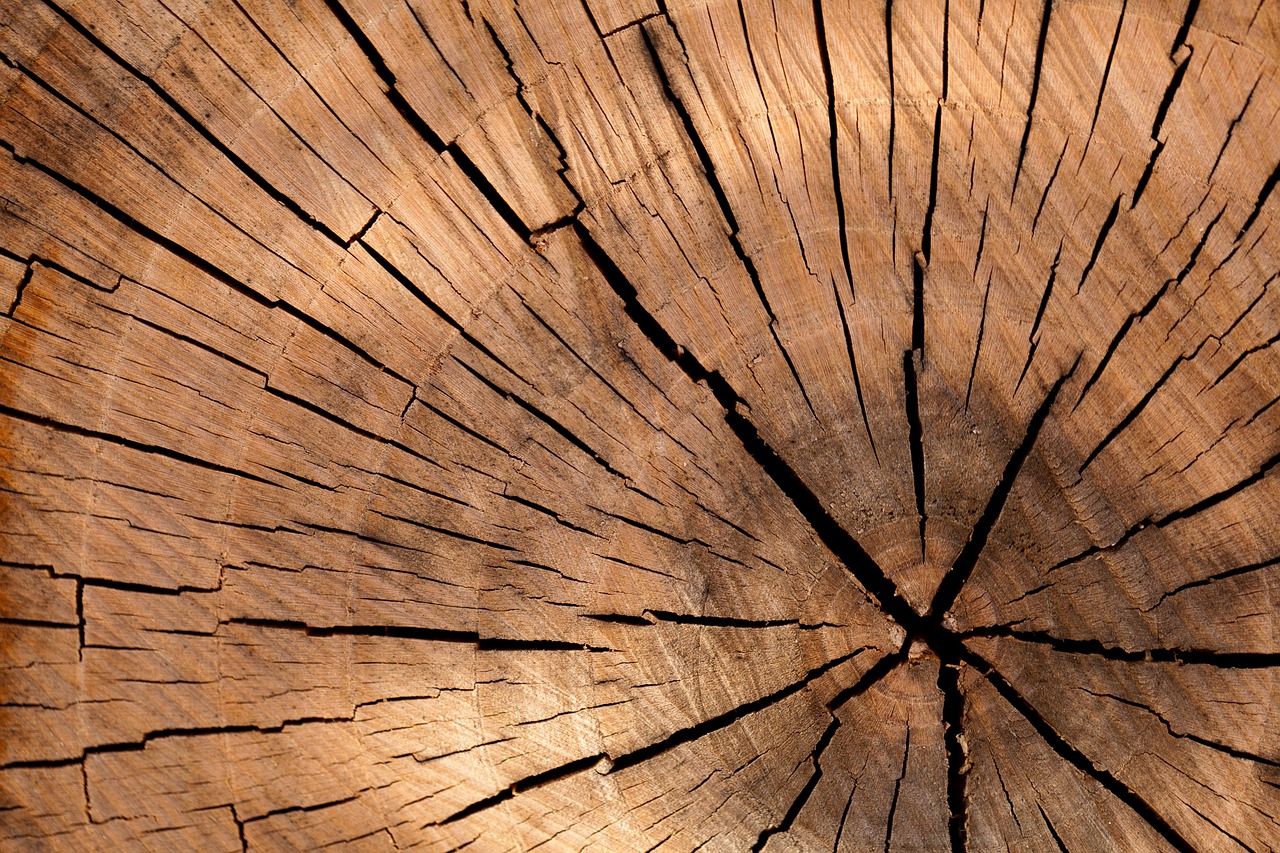A tree growth rate chart provides a quick and efficient way to compare the growth rates of popular tree species. By examining this chart, you can easily determine which trees grow fastest, helping you make informed decisions for landscaping or forestry projects.
Understanding Tree Growth Rates
Tree growth rates are a critical factor for anyone involved in landscaping, forestry, or gardening. Different species of trees exhibit varying growth rates influenced by numerous factors, including climate, soil type, and care. Knowing which trees grow quickly can help in planning for shade, privacy, or even timber production.

Growth rates are typically measured in height gained per year. Fast-growing trees can reach their full height in a shorter time, while slow-growing trees may take decades to mature. When selecting trees for your property, consider not just the growth rate, but also the ultimate size and environmental requirements of each species.
Here are some key factors that affect tree growth rates:
- Species: Different species have inherent growth patterns.
- Soil Quality: Nutrient-rich soil promotes faster growth.
- Water Availability: Adequate irrigation is essential.
- Sunlight Exposure: Most trees require full sunlight for optimal growth.
- Climate: Temperature and seasonal changes impact growth rates.
Popular Fast-Growing Tree Species
Several tree species are well-known for their rapid growth. Understanding these species can assist you in making appropriate choices based on your needs. Below is a table that highlights some popular fast-growing trees, their average growth rates, and typical uses.

| Tree Species | Average Growth Rate (Feet per Year) | Common Uses |
|---|---|---|
| Eastern Cottonwood | 3 to 5 | Shade, Timber |
| Red Maple | 2 to 3 | Shade, Ornamental |
| Silver Maple | 3 to 5 | Shade, Landscaping |
| Lombardy Poplar | 3 to 5 | Windbreaks, Privacy Screens |
| Sawtooth Oak | 2 to 3 | Shade, Wildlife Habitat |
This table illustrates just a few of the many tree species that can provide fast results in terms of growth. When selecting a tree, consider its final height, width, and the space available in your yard or landscape design.
Importance of Tree Selection
Choosing the right tree species is essential for successful landscaping. Fast-growing trees may provide immediate benefits such as shade and privacy; however, they can also have drawbacks. Some might have weak wood or invasive root systems that could damage nearby structures or plants. It is vital to balance the desire for rapid growth with the long-term health and stability of your landscape.
When selecting a tree, consider the following:

- Growth Rate: How quickly do you want the tree to mature?
- Maintenance Needs: Some fast-growing trees may require more care.
- Pest Resistance: Certain species are more susceptible to pests and diseases.
- Aesthetic Appeal: Choose a tree that fits your landscape design.
- Environmental Impact: Consider how the tree will affect local wildlife.
Understanding these elements will help you make informed decisions when choosing trees for your property. Fast-growing trees offer many advantages but come with responsibilities that should not be overlooked.
Factors Influencing Tree Growth Rates
The growth rate of trees is influenced by a variety of factors. Understanding these factors can help you select the right tree species for your specific environment. Here are some of the most important elements that affect how quickly a tree grows:
- Soil Quality: Trees thrive in nutrient-rich soils. Soil pH, texture, and drainage all play significant roles in tree health.
- Water Availability: Adequate water supply is essential for optimal growth. Trees need a consistent moisture level, especially during their early years.
- Climate: Temperature and seasonal variations greatly influence growth. Some trees prefer warm climates, while others thrive in cooler conditions.
- Sunlight: Most tree species require full sunlight to grow effectively. Shade-tolerant trees may adapt better in lower light conditions but will generally grow slower.
- Species Characteristics: Each tree species has unique genetic traits that determine its growth potential and adaptability.
The Role of Pruning and Maintenance
Proper pruning and maintenance can significantly enhance the growth rates of trees. When trees are pruned correctly, they can focus their energy on developing healthy branches and leaves instead of expending energy on dead or diseased wood.
Here are some benefits of regular pruning:

- Encourages healthy growth by removing dead or diseased branches.
- Improves air circulation and sunlight penetration within the tree canopy.
- Shapes the tree for aesthetic appeal and structural integrity.
- Reduces the risk of disease by eliminating potential breeding grounds for pests.
Best Practices for Pruning Trees
To ensure effective pruning, follow these best practices:
- Timing: Prune trees during their dormant season, typically late winter or early spring.
- Tools: Use sharp, clean tools to make clean cuts. This reduces the risk of injury to the tree.
- Technique: Make cuts at a slight angle just above a leaf node or bud. Avoid leaving stubs.
- Amount: Do not remove more than 25% of a tree’s foliage at one time to prevent shock.
Tree Growth Rate Comparisons by Region
The growth rates of various tree species can also vary depending on geographical location. Different regions have distinct climates, soil types, and environmental conditions that affect how trees grow. Below is a table summarizing average growth rates for selected species in different regions across the United States.
| Region | Tree Species | Average Growth Rate (Feet per Year) |
|---|---|---|
| Northeast | Sugar Maple | 1 to 2 |
| Southeast | Loblolly Pine | 3 to 5 |
| Midwest | Black Walnut | 2 to 3 |
| Southwest | Ponderosa Pine | 1 to 2 |
| Pacific Northwest | Douglas Fir | 2 to 3 |
This table illustrates how various factors contribute to tree growth rates across different regions. It is essential to choose species that not only fit your aesthetic needs but also thrive in your local environment.
Impact of Environmental Stressors
Environmental stressors such as drought, pests, and diseases can significantly impact tree growth rates. Understanding these stressors allows you to take preventive measures to support tree health. Here are some common stressors:
- Drought: Lack of water can stunt growth and lead to tree mortality.
- Pests: Insects like aphids or borers can damage trees and reduce their growth potential.
- Disease: Fungal infections or bacterial diseases can weaken trees and inhibit growth.
- Poor Soil Conditions: Compacted or contaminated soil can limit root development and nutrient uptake.
By being aware of these environmental stressors, you can implement strategies such as soil amendments, pest control measures, and irrigation techniques to promote healthier growth in your trees.
Managing Tree Growth for Optimal Health
Effective management of tree growth involves understanding the needs of each species and implementing practices that promote their health and longevity. Proper care can mitigate the effects of environmental stressors and enhance growth rates. Below are some recommended management practices.
Irrigation Techniques
Watering is crucial, especially during the early years of a tree’s life. Here are some effective irrigation techniques:
- Drip Irrigation: This method delivers water directly to the roots, reducing evaporation and runoff.
- Soaker Hoses: These hoses allow water to seep slowly into the soil, providing consistent moisture.
- Mulching: Applying organic mulch around the base of the tree helps retain soil moisture and suppress weeds.
Fertilization Strategies
Fertilization can enhance tree growth by providing essential nutrients. However, it is important to use fertilizers appropriately to avoid over-fertilization, which can lead to other issues.
Consider the following fertilization strategies:
- Soil Testing: Conduct soil tests to determine nutrient levels and pH before applying fertilizers.
- Slow-Release Fertilizers: Use slow-release formulas to provide a steady supply of nutrients over time.
- Organic Options: Consider organic fertilizers such as compost or well-rotted manure for a natural nutrient boost.
Common Tree Diseases and Pests
Identifying common diseases and pests is vital for maintaining tree health. Early diagnosis allows for timely intervention, which can save trees from severe damage. Below is a list of prevalent tree diseases and pests:
| Disease/Pest | Description | Treatment |
|---|---|---|
| Powdery Mildew | A fungal disease causing a white powdery coating on leaves. | Apply fungicides and improve air circulation. |
| Emerald Ash Borer | An invasive beetle that attacks ash trees, causing decline and death. | Use insecticides and monitor tree health regularly. |
| Leaf Spot | A fungal infection leading to brown or black spots on leaves. | Remove affected leaves and apply fungicides if necessary. |
| Spider Mites | Tiny pests that suck sap from leaves, causing discoloration. | Insecticidal soap or neem oil can help control infestations. |
Regular inspection of trees can help catch these issues early, enabling effective treatment and minimizing damage.
The Importance of Tree Species Diversity
Diversity among tree species in a landscape is crucial for ecological balance. Planting a variety of species can enhance resilience against pests and diseases, promote biodiversity, and improve ecosystem functionality. Here are some benefits of maintaining tree species diversity:
- Pest Resistance: A diverse landscape can reduce the likelihood of widespread pest infestations.
- Ecosystem Stability: Different species support various forms of wildlife, contributing to a balanced ecosystem.
- Aesthetic Appeal: A variety of trees adds visual interest to landscapes throughout the seasons.
- Soil Health: Different root systems can improve soil structure and nutrient availability.
Selecting Complementary Species
When planning a landscape, consider selecting tree species that complement each other. Some trees have symbiotic relationships that enhance growth and health. For example:
- Nitrogen-Fixing Trees: Species like black locust can improve soil nitrogen levels for surrounding plants.
- Keepsake Trees: Planting trees that attract beneficial insects can help control pests naturally.
- Diverse Canopy Layers: Combining tall trees with understory species creates habitat for various wildlife.
Diversity not only strengthens landscapes but also enhances their aesthetic quality and ecological functions. By considering these factors, you can create resilient and thriving environments that promote healthy tree growth.
Further Considerations for Tree Selection
When selecting trees for your landscape, it’s essential to consider not just growth rates and species compatibility but also the long-term implications of your choices. Here are additional factors to keep in mind:
Local Regulations and Restrictions
Before planting, it’s important to check local regulations regarding tree planting. Some municipalities have restrictions on certain species due to their invasive nature or potential to disrupt local ecosystems. Additionally, there may be guidelines on planting near utilities, sidewalks, or property lines.
- Invasive Species: Avoid planting trees classified as invasive in your area, as they can outcompete native species and disrupt local habitats.
- Utility Considerations: Be aware of overhead power lines and underground utilities when selecting tree locations and species.
- Landscape Plans: Some neighborhoods may require landscape plans for new plantings to ensure compliance with community standards.
Future Growth and Maintenance Needs
Consider the future size and maintenance needs of the trees you choose. As trees mature, they will require ongoing care, which may include pruning, pest management, and irrigation. Here are some maintenance considerations:
- Space Requirements: Ensure that the chosen species has enough space to grow without becoming crowded.
- Growth Rate Management: Fast-growing trees may require more frequent pruning to maintain their shape and health.
- Long-Term Care: Factor in the costs and labor of maintaining mature trees, especially in urban environments.
Final Thoughts
Selecting the right tree species involves a careful balance of various factors such as growth rate, environmental conditions, aesthetic preferences, and long-term maintenance. Understanding tree growth rates helps you make informed decisions that align with your landscaping goals. Fast-growing trees can provide immediate benefits, but it is essential to consider their long-term impact on the environment and your property.
Diversity in tree planting not only enhances the beauty of a landscape but also contributes to ecological stability. By combining knowledge of tree species with effective management practices, you can create a thriving environment that supports both human needs and wildlife habitats.
As you plan your landscape or forestry projects, remember that each tree has its unique requirements. Investing time in research, choosing the right species, and implementing care strategies will lead to healthier trees and a more sustainable environment for generations to come.
In conclusion, a comprehensive understanding of tree growth rates and the factors influencing them allows for informed decision-making in landscaping. The benefits of proper selection and care extend beyond aesthetics; they contribute positively to the ecosystem’s health and resilience. By fostering a diverse array of tree species, we can enhance not only our personal spaces but also the environment at large.
